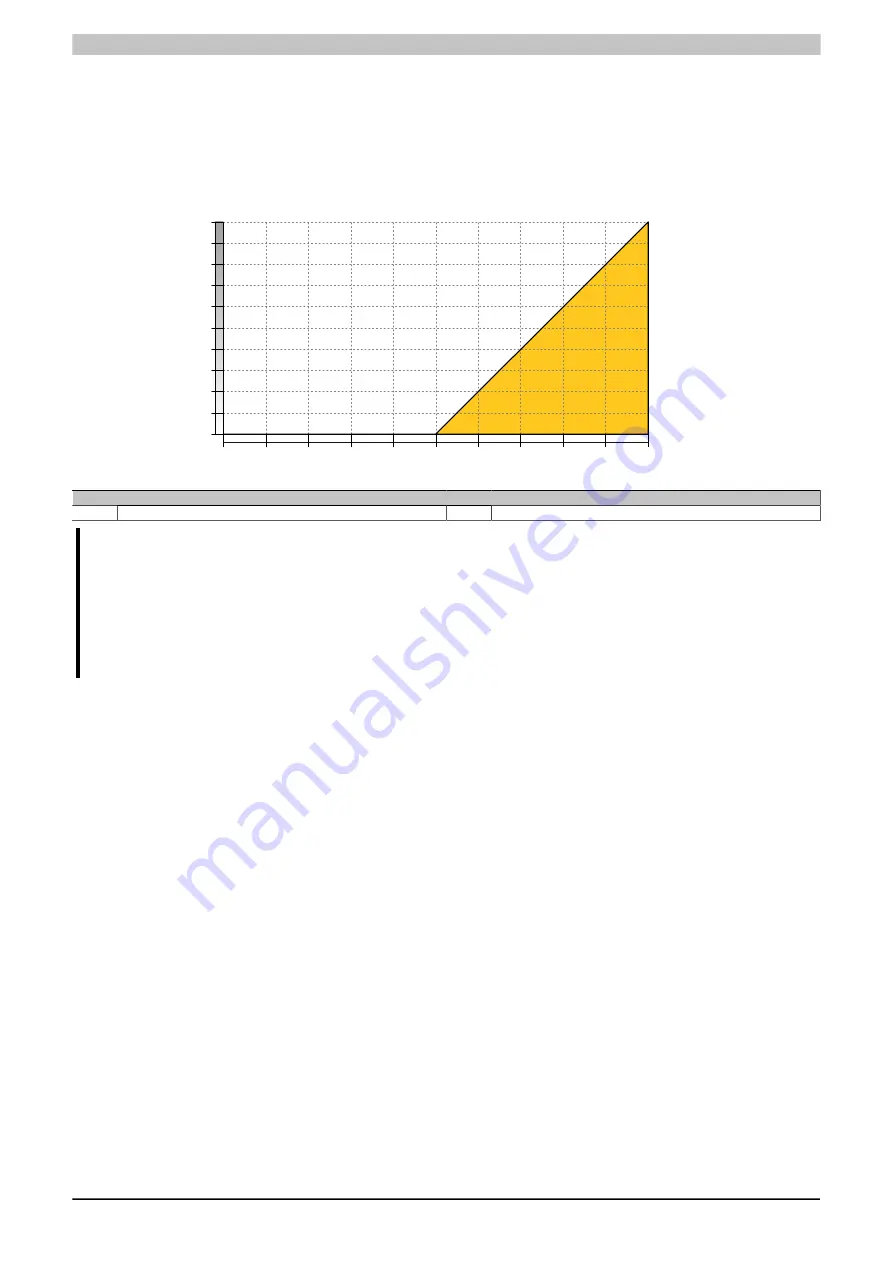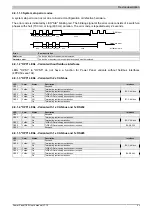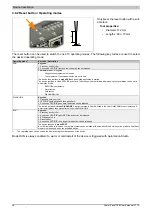
Device description
Power Panel C50 User's manual V1.10
19
4.4.6 Derating of the display brightness
Display brightness of 15.6" variants
Operating the display at the maximum ambient temperature and maximum display brightness results in impairments
in the display. The following derating of the display brightness must therefore be observed:
0
1
2
3
4
5
6
7
8
9
10
T [°C]
DB [%]
0
10
20
30
40
50
60
70
80
90
100
Diagram legend
DB [%] Display brightness (DB) in percent
T [°C] Derating in °C
Information:
The display brightness can be derated in two ways:
1) Reducing the display brightness according to the max. ambient temperature.
2) Observing the maximum permissible ambient temperature for the selected display brightness.
In addition to this derating, a further derating must be observed depending on the installation condi-
tions (see
"Derating the ambient temperature" on page 18
).
4.4.7 Surface resistance
Chemical resistance of the front glass per ASTM D 1308-02 and ASTM F 1598-95 for an exposure time of 24
hours without visible changes:
•
Acetone
•
Alkaline cleaning agents
•
Ammonia 5%
•
Gasoline (unleaded)
•
Beer
•
Brake fluid
•
Chlorine-alkaline cleaning and disin-
fecting agents (pH value min. 11) 1.5%
•
Hydrogen chloride 6%
•
Coca-Cola
•
Diesel
•
Diesel oil
•
Dimethylbenzene
•
Vinegar
•
Ethanol
•
Grease
•
Ammonia-based glass cleaners
•
Sidolin glass cleaner
•
Graphite
•
Hydraulic fluid (Skydrol)
•
Isopropanol
•
Coffee
•
Ink
•
Lysol
•
Methylbenzene
•
Methyl ethyl ketone
•
Naphtha
•
Caustic soda 5%
•
Nitric acid 70%
•
Hydrochloric acid 5%
•
Lubricants
•
Sulphuric acid 40%
•
Suntan oil and UV radiation
•
Cooking oil
•
Stamping ink
•
Tea
•
Turpentine
•
Turpentine oil replacement (thinner)
•
Trichloroethylene






























